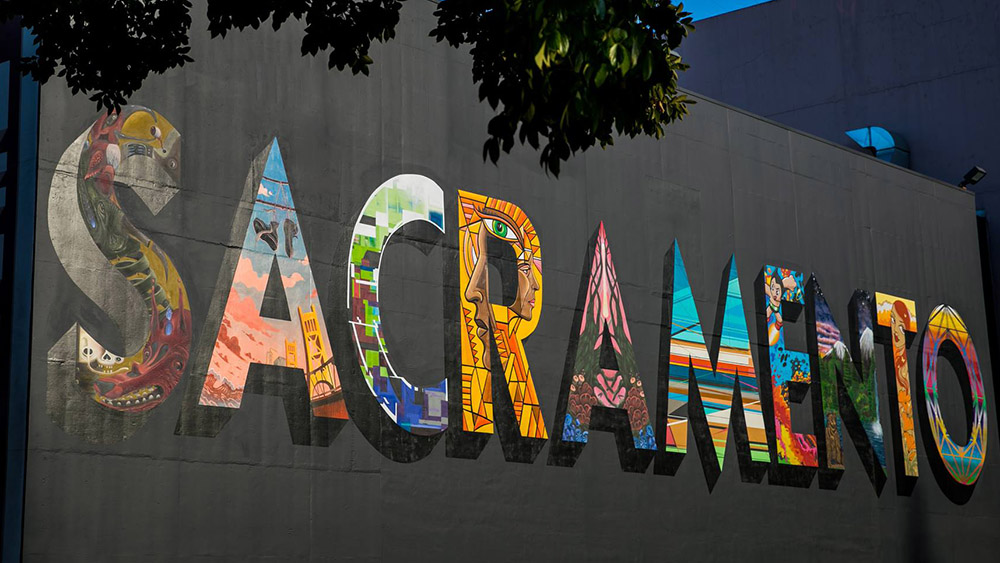 (Sacramento State/Jessica Vernone)
(Sacramento State/Jessica Vernone)By Cynthia Hubert
Sacramento State has cultivated deep roots in the community and region, having forged ties to schools, health care institutions and nonprofit groups, among others, in an effort to help address the area’s most pressing issues.
The Anchor University Task Force was established more than a year ago to research ways to build on those alliances and make an even bigger difference.
Leaders of the group released its detailed report on Oct. 10, unveiling key recommendations that they hope will further cement Sac State students, faculty members and administrators as forces for good in the region.
President Robert S. Nelsen has defined an anchor university as an institution that “wants to see true, lasting change through civic engagement” and seeks solutions to issues such as poverty, hunger, inadequate education, unemployment, and health deficiencies. At the same time, an anchor institution must continue to advance teaching and learning, he says.
During the last year, the 50-member task force reviewed existing reports about regional needs, conducted faculty and community surveys and held three community meetings to gather information, solicit input and establish priorities of action for deepening the university’s engagement with Sacramento.
“It is our sincere hope that the recommendations lay the foundation for President Nelsen and the campus community to develop and implement the Anchor University Initiative,” said Phil Garcia, vice president for Public Affairs and Advocacy.
“By aligning our resources and efforts with the anchor mission, we will deepen and broaden our community partnerships in a mutually beneficial way over the long term to improve the quality of life in the communities we serve.”
The task force identified various needs and challenges facing Sacramento, including high absenteeism in schools, polluted neighborhoods, rising homelessness and disparities in economic growth within the city. Sac State currently has a multitude of activities and alliances with community groups to address many of the issues, the report states.
For example: the College of Education’s students are required to complete work in local schools. Staff and students from the College of Arts & Letters lead activities for Sacramento City Unified School District students. Environmental Studies faculty and students have restored wetland and riparian habitats along the American River. The university’s Doctor of Physical Therapy program offers free clinics as part of a patient care course. Sac State has conducted the county’s “Point In Time” homeless census.
But such efforts are scattered, with no university-wide coordination or strategic plan bringing them together, according to the report.
Surveys conducted by the task force revealed that community partners want more opportunities to work with Sac State students as interns and volunteers, but cite a lack of easily accessible information to access such resources. Respondents said the university should be more involved in collaborations that extend beyond campus. Faculty members agreed, and cited such obstacles as workload, university bureaucracy and the absence of an information clearinghouse about Sac State partnerships and partners as barriers to community engagement.
In response to the findings, the task force made a number of key recommendations, including:
- Appointing a senior administrator to lead an office to develop and oversee the university’s anchor mission.
- Creating a standing Anchor University Advisory Council, with community representation, to offer direction, support and feedback.
- Establishing and implementing a professional development program to prepare faculty, students and staff for community engagement activities.
Vicki Boyd from the Sacramento chapter of the National Council of Negro Women called the Anchor University Initiative "vital for pre-K-12 and adult learners to enable both to set a viable goal for attainment of a college degree to a public college that’s located right in their community."
She also emphasized the need for outreach to the region's African American communities.
“Specifically, I would hope that the Anchor University Initiative is committed to substantially increasing the admission numbers of African American high school students," Boyd said, "along with community college transfers and potentially returning adult students through programs such as mentoring days and the Crankstart Program; along with sporting and college fair events targeted toward fostering a welcoming environment to the African American community from CSUS."
Nelsen said the report represents a strong first step in his plan to ensure that Sac State continues to strengthen ties and contribute to the community’s growth.
“I am very pleased with the Anchor University Task Force Report, and I look forward to working with the community, faculty, staff, and students to develop a strategic plan,” Nelsen said.
Garcia served as task force co-chair along with Prof. Michelle Dang of the School of Nursing. Dean Sheree Meyer of the College of Arts and Letters served as co-chair of the task force's steering committee with Prof. Dang.
To learn more, see the Anchor University web page.
